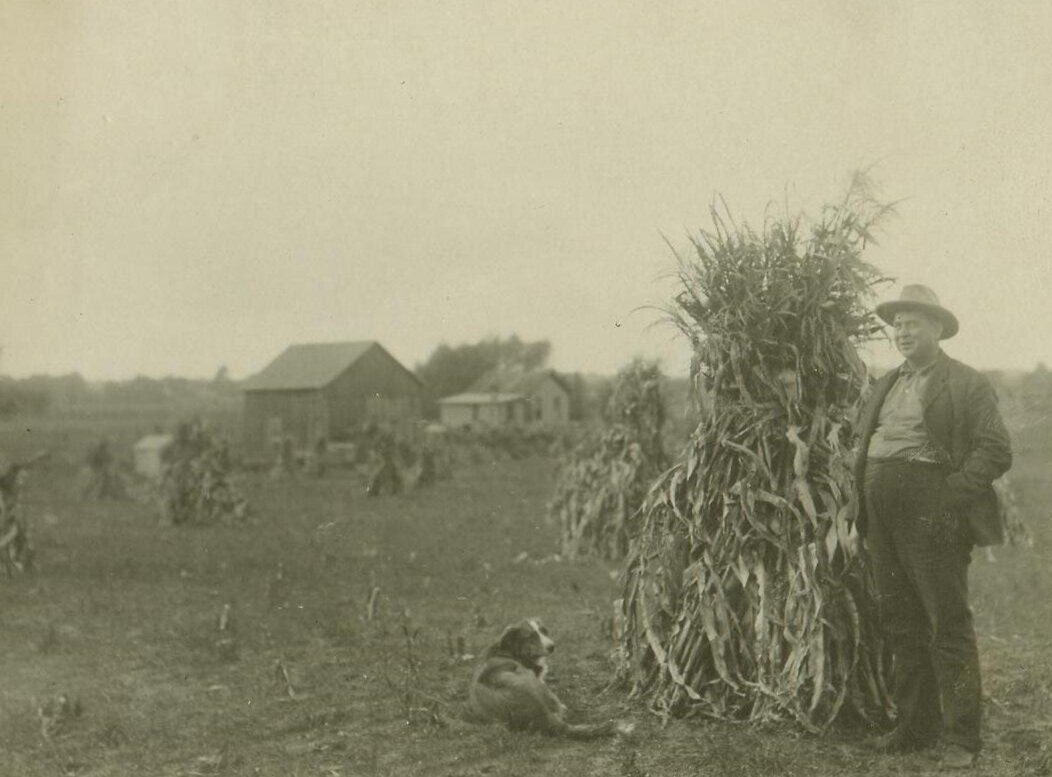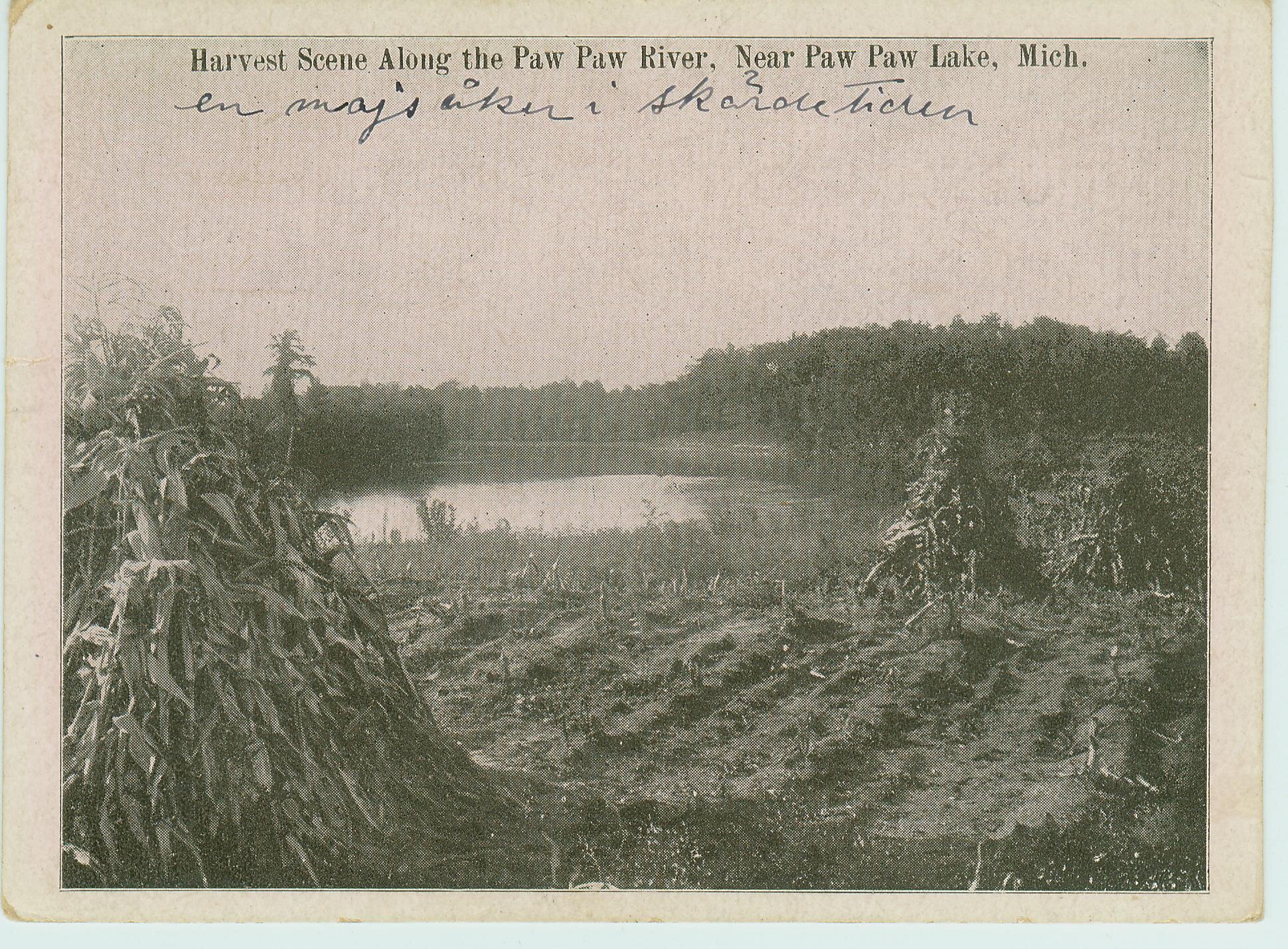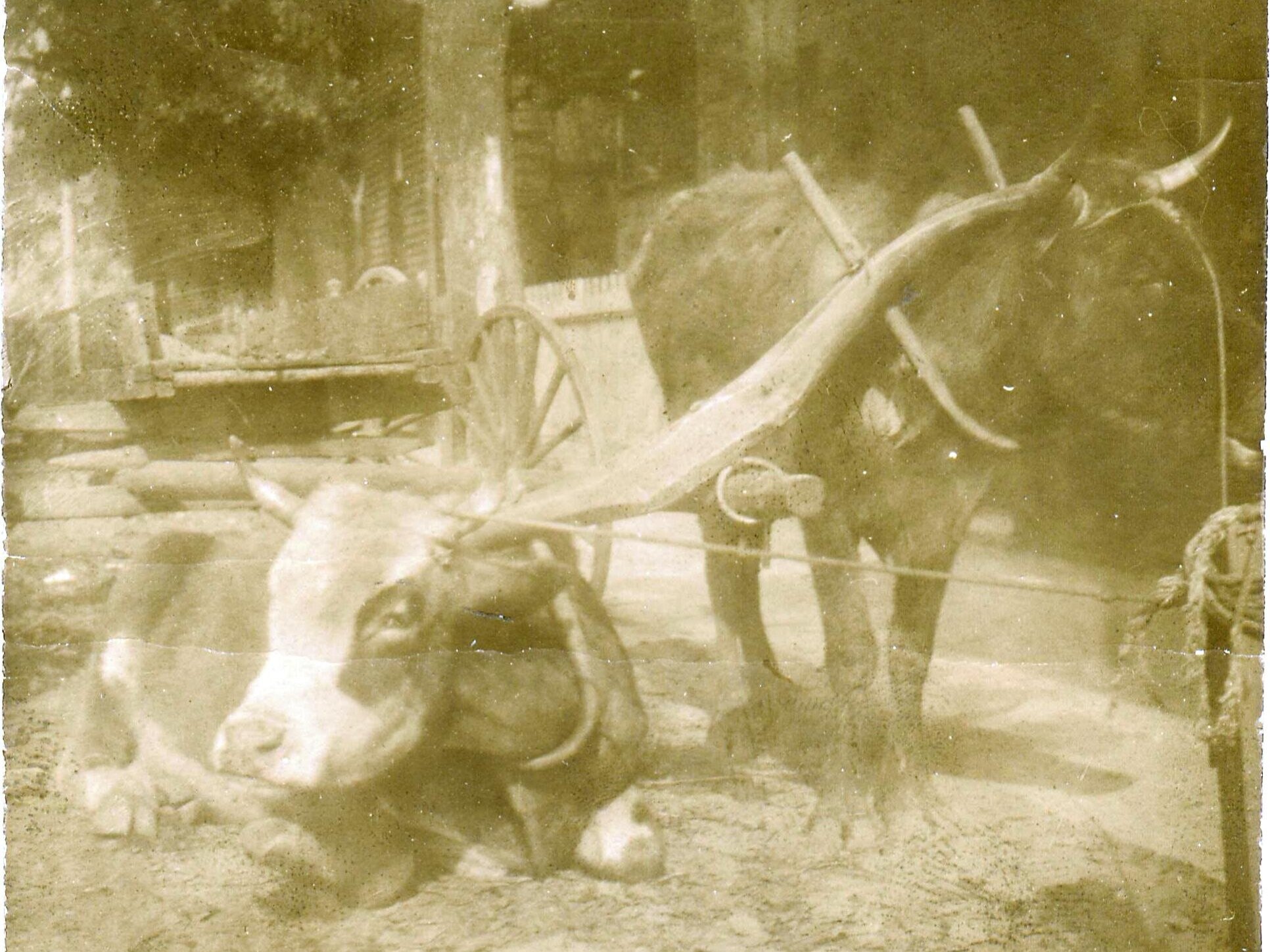



PIONEERING FARMERS
Tree-chopping was still a common winter activity here even well after the sawmill days. Many pioneer settlers spent years clearing tree stumps and continuing to harvest woods from their land to sell as a source of income. The homesteader often began by building a log cabin, or staying with others until one could be built. The logs available nearby were also the building material for their first barns. Gardens near the home were planted first, and quickly surrounded by fencing to keep wild animals from eating them. Most early farmers purposefully raised diverse crops—grains, vegetables, fruits, and livestock—that could sustain the diets of the farm’s family. Horses and oxen were the early farmer’s most vital tools, meaning that the farm had to grow enough feed as well as food. If the farm was successful, the log cabin was usually replaced by a larger frame home, amenities were added, and the following generations could continue the farm’s legacy. In the 20th century, farmers became more likely to specialize in just a few crops.